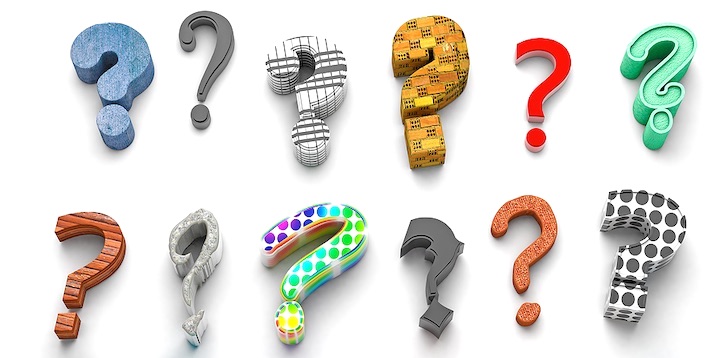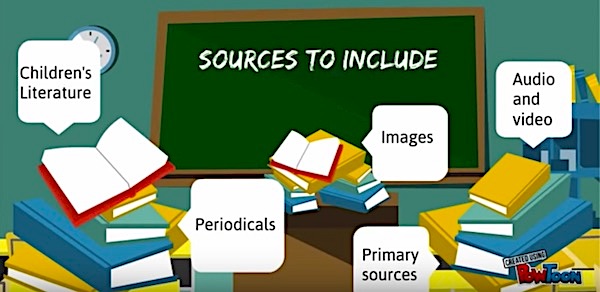5 Tips to Engage Kids in Inquiry This Fall
By Kathryn Caprino and Sean Ruday

As we give ourselves a lot of grace – and coffee – to get through the next several months, we want to offer a way of thinking about instruction that can be helpful to teachers, parents, and, of course, middle grades students. We want to propose a fall of inquiry.

We think inquiry fits in well to this fall’s learning context because students can read multiple texts, including digital texts, that may be more accessible during this time, and still develop essential critical thinking and analysis skills.
Inquiry across the curriculum
Meeting multiple standards in English Language Arts, Social Studies, and other subject areas, inquiry learning also provides opportunities for students to do some personal investigation in a way that looks like what we want them to be doing as literate citizens – and can be done in remote, in-person, or home school settings.
We love to incorporate inquiry into our own teaching. In this post, we’ll share our definitions of inquiry learning and essential questions and offer five practical steps to encourage middle grades students to inquire this fall.
What is inquiry learning?
We like to think about inquiry work as a way for students to investigate topics in which they are interested as they read a multitude of texts (e.g., print books, songs, videos, Tweets, Instagram posts, pieces of art, nonfiction texts, etc.) in order to answer an essential question.
What is an essential question?
An essential question is a broad, open-ended question that either adults can create, students can create, or adults and students can create together. Examples of essential questions include What does home mean? What is beauty? What does true human connection really look like? Why should we embrace change?
These questions are not easily answered but can be unraveled by exploring myriad texts and then wrestling with how different texts provide possible answers to the inquiry question.
The real goal is not for students to answer the essential question explicitly but rather to use texts to add complexity to their understandings of particular topics and ultimately inspire new inquiries.
What we like about inquiry learning, especially during this time of uncertainty in our schools, is that, first, it mimics what real people do when they want to find out about something or learn more.
Second, we believe inquiry learning presents a lot of opportunities for differentiation (because essential questions and texts selected could be varied depending on students’ interests and/or reading progress). Third, and perhaps most related to this time of remote learning, is that students could do this remotely and then share with their peers what they are finding out.
Try Out These Five Tips
Here are five tips you can use to try out inquiry learning in whatever school settings you find yourself in this week – or may find yourself in next week.
1. Model and Promote Inquiry. When you have a question about something, ask it aloud. Teachers often model for students the thoughts they ask themselves as readers and writers. The same practice holds true with inquiry work.
When you have a question about something in the world, ask it aloud. Ask your students what they think about something in the news or some phenomenon you’ve observed. Use brain breaks to invite your students to share some of what they’re personally interested in. Create a space in which asking questions becomes the norm.
2. Create Essential Question(s). There are many ways to go about creating essential questions. You could take students’ interests into account and create an essential question for them. This might be a good way to start if you (or they) have not delved into inquiry learning prior to now.
Another option is working with students to co-create an essential question. An even more advanced option would be to have students create their own essential questions. Students could have individual questions that they could work on answering during independent reading time. (We recommend asking students to brainstorm possible responses to the essential question selected before delving into the text set.)
3. Generate a Text Set. In this step, you generate a text set to help students answer the essential question. This selection should include an assortment of texts (e.g., fiction texts, movies, songs, nonfiction texts, etc.) that students can read and interrogate as they explore the essential question.
4. Support Students. Here is where you can bring in more traditional teaching methods. You can provide reading mini-lessons and then ask students to apply particular skills as they read, and you can have reading conferences as students read independently. You can also encourage students to share what they are finding out with their peers as you build oral communication skills.
Text recommendations can also be made to meet students’ interests and literacy abilities. Probably the best way you can support students is to read texts alongside students as you model trying to answer an essential question that is similar to (or different from) the one your students are exploring.
5. Celebrate and Share Inquiry. At the conclusion of the inquiry unit, provide students with an opportunity (formal or informal) to share the ways in which their reading of multiple texts helped them answer their essential questions.
It’s important to ask students to reflect on how their initial responses to the essential question changed or remained the same. The other goal here is to encourage future inquiry work for your students and to frame this type of work in the context of what literate adults do in the real world.
Add some inquiry this fall!
So, as this fall begins, we hope that you will consider the role that inquiry learning can play in your curriculum this semester! And we’d love to know more about how you plan on incorporating it with your middle grades students.
Katie Caprino is an Assistant Professor of PK-12 New Literacies at Elizabethtown College. She taught middle and high school English in Virginia and North Carolina. She holds a BA from the University of Virginia, a MA from the College of William and Mary, a MA from Old Dominion University, and a Ph.D. from the University of North Carolina at Chapel Hill. She researches and presents on children’s, middle grades, and young adult literature; the teaching of writing; and incorporating technology into the literacy classroom. You can follow Katie on Twitter at @KCapLiteracy and visit her book blog at katiereviewsbooks.wordpress.com.
Sean Ruday is Associate Professor and Program Coordinator of English Education at Longwood University and a former classroom teacher. He began his teaching career at a public school in Brooklyn, NY, and has taught English and language arts at public and private schools in New York, Massachusetts, and Virginia. He holds a BA from Boston College, an MA from New York University, and a Ph.D. from the University of Virginia. Sean has written twelve books with Routledge/Eye On Education. He frequently writes and presents on innovative ways to improve students’ literacy learning. You can follow Sean on Twitter at @SeanRuday and visit his website at www.seanruday.weebly.com.



































